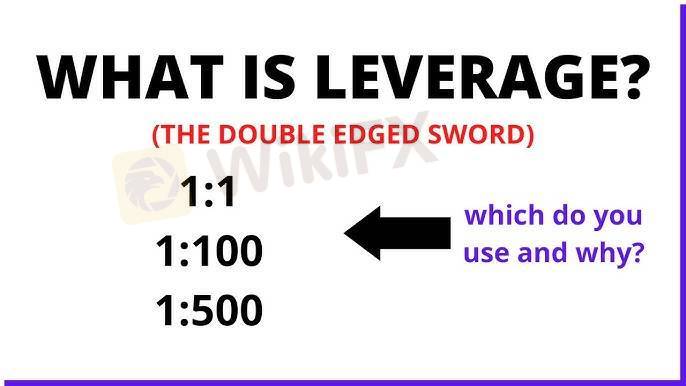
2025-02-17 15:33
IndustryUnderstanding leverage in forex trading
#Firstdealofthenewyearastylz
Leverage in forex trading is a tool that allows traders to control a larger position with a smaller amount of capital. It is essentially borrowed capital from a broker, enabling traders to amplify their potential profits—but also their potential losses.
1. How Leverage Works
Leverage is expressed as a ratio, such as 50:1, 100:1, or 500:1, which indicates how much a trader can control relative to their initial investment. For example:
A 100:1 leverage means that with just $1,000, a trader can control a position worth $100,000.
A 500:1 leverage means that with $1,000, a trader can open a position worth $500,000.
2. Margin and Leverage
Leverage is closely related to margin, which is the amount of money required to open a trade. Brokers require traders to deposit a certain percentage of the trade's total value as margin. For instance:
With 100:1 leverage, a trader only needs 1% margin ($1,000 to control $100,000).
With 50:1 leverage, the required margin is 2%.
3. Impact of Leverage on Profits and Losses
Leverage magnifies both gains and losses.
Example of a leveraged trade:
If a trader buys 1 lot (100,000 units) of EUR/USD at 1.1000 with 100:1 leverage, they only need $1,000 as margin.
If the price rises to 1.1050 (+50 pips), the trader makes $500 profit.
If the price drops to 1.0950 (-50 pips), the trader loses $500.
4. Margin Calls and Stop-Out Levels
If a trader’s losses exceed their available margin, the broker issues a margin call, requiring additional funds to keep the trade open. If the trader fails to deposit more money, the broker will close the trade at the stop-out level to prevent further losses.
5. Choosing the Right Leverage
Low leverage (10:1 to 50:1): Safer for beginners, reduces risk.
High leverage (100:1 to 500:1): Increases profit potential but also the risk of losing capital quickly.
Regulatory limits: Some regions, like the U.S. and Europe, impose leverage caps (e.g., 30:1 for retail traders).
Like 0
FX4167272243
Trader
Hot content
Industry
Event-A comment a day,Keep rewards worthy up to$27
Industry
Nigeria Event Giveaway-Win₦5000 Mobilephone Credit
Industry
Nigeria Event Giveaway-Win ₦2500 MobilePhoneCredit
Industry
South Africa Event-Come&Win 240ZAR Phone Credit
Industry
Nigeria Event-Discuss Forex&Win2500NGN PhoneCredit
Industry
[Nigeria Event]Discuss&win 2500 Naira Phone Credit
Forum category

Platform

Exhibition

Agent

Recruitment

EA

Industry

Market

Index
Understanding leverage in forex trading
 Hong Kong | 2025-02-17 15:33
Hong Kong | 2025-02-17 15:33#Firstdealofthenewyearastylz
Leverage in forex trading is a tool that allows traders to control a larger position with a smaller amount of capital. It is essentially borrowed capital from a broker, enabling traders to amplify their potential profits—but also their potential losses.
1. How Leverage Works
Leverage is expressed as a ratio, such as 50:1, 100:1, or 500:1, which indicates how much a trader can control relative to their initial investment. For example:
A 100:1 leverage means that with just $1,000, a trader can control a position worth $100,000.
A 500:1 leverage means that with $1,000, a trader can open a position worth $500,000.
2. Margin and Leverage
Leverage is closely related to margin, which is the amount of money required to open a trade. Brokers require traders to deposit a certain percentage of the trade's total value as margin. For instance:
With 100:1 leverage, a trader only needs 1% margin ($1,000 to control $100,000).
With 50:1 leverage, the required margin is 2%.
3. Impact of Leverage on Profits and Losses
Leverage magnifies both gains and losses.
Example of a leveraged trade:
If a trader buys 1 lot (100,000 units) of EUR/USD at 1.1000 with 100:1 leverage, they only need $1,000 as margin.
If the price rises to 1.1050 (+50 pips), the trader makes $500 profit.
If the price drops to 1.0950 (-50 pips), the trader loses $500.
4. Margin Calls and Stop-Out Levels
If a trader’s losses exceed their available margin, the broker issues a margin call, requiring additional funds to keep the trade open. If the trader fails to deposit more money, the broker will close the trade at the stop-out level to prevent further losses.
5. Choosing the Right Leverage
Low leverage (10:1 to 50:1): Safer for beginners, reduces risk.
High leverage (100:1 to 500:1): Increases profit potential but also the risk of losing capital quickly.
Regulatory limits: Some regions, like the U.S. and Europe, impose leverage caps (e.g., 30:1 for retail traders).
Like 0
I want to comment, too
Submit
0Comments

There is no comment yet. Make the first one.

Submit
There is no comment yet. Make the first one.